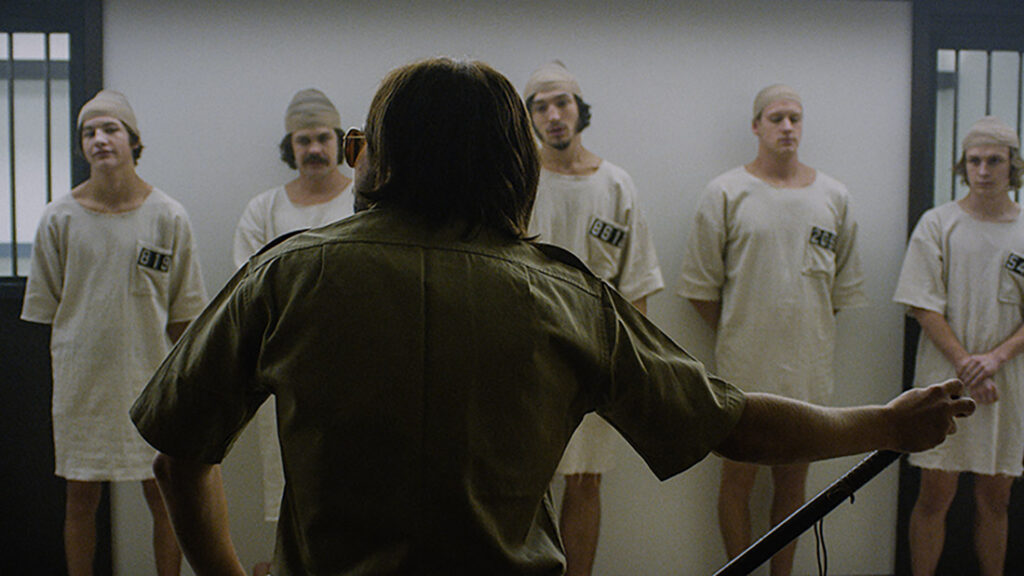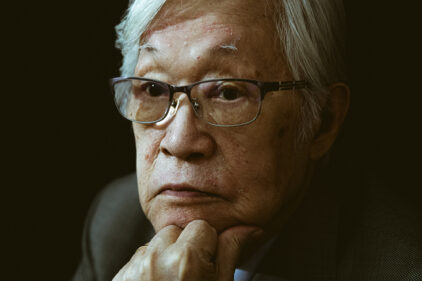One of the most asked questions of Sundance 2015 is going to
seem like a simple one—“Would you be a prisoner or a guard?” And, of course,
that opening salvo will lead to deeper questions of how far one would go or how
much abuse one would take in each role. Kyle Patrick Alvarez’s “The Stanford Prison
Experiment” has been compared to Craig Zobel’s Sundance hit “Compliance” in the
manner in which it provokes similar post-screening conversation, but this film
is both more ambitious and less accomplished than Zobel’s work. Alvarez is
trying to capture something not just about human behavior but the institutions
that shape it, and he mostly gets there. There’s a tighter, better film within
this 122-minute version, but there’s more than enough meat on the bones of it
as is to consider it a success, even just as a conversation-starter, a category which has been under-populated this Sundance.
In this true story, Billy Crudup, in a nice comeback with strong work in “Rudderless”
and now this, plays Dr. Philip Zimbardo, a Stanford University professor in
1971 who initiates what will become one of the most famous social
experiments of all time. Working with a few select colleagues, mostly in what
looks like secret in a basement, Zimbardo recruits about two dozen male
students with an offer of $15 a day for two weeks. What’s the assignment? They
will recreate a prison environment—half will be guards, half will be prisoners.
The guards are told not to touch the prisoners, but they’re given a lot of
freedom otherwise. Chosen by a coin flip as to which side they’re on, the men
are divided, and the “fun” begins.
By the end of DAY ONE, things have gone horribly awry. An
overzealous guard named Christopher thinks he’s a combination of John Wayne and
the law in “Cool Hand Luke,” and acts accordingly. He clearly enjoys playing mind
games with his “prisoners,” forcing them to identify only by number and mentally
abusing them. An outspoken student named Daniel (or #8612) (Ezra Miller) pushes
back and gets thrown in the “hole,” which is actually a closet. While it’s
clear that these men are just in rooms in the basement of an academic building,
the conditions are designed to replicate prison and the human mind responds almost immediately. They get no sunlight, lose
track of time, and their wills are quickly broken. And Zimbardo watches the
whole thing, even going as far as holding parole hearings for those who want to
leave.
Based on the emotional and physical abuse that takes place,
it’s hard to argue that Zimbardo’s experiment “worked” (and it feels like
something that would result in multiple lawsuits and “Dateline NBC” specials
were it attempted today) and yet the lessons learned here influence behavioral
studies to this day. So was it worth it? Things got bad on day one and were downright frightening
by day two. And it went both ways. Guards abused power; prisoners discussed
revolt almost immediately. Of course, the people behind the study started to
question what they were doing, and Zimbardo was advised to stop, but he let
things get to their breaking point before they do.
Thematically, “The Stanford Prison Experiment” clearly has a
lot to present about not just male aggression but what being imprisoned does to people (Nelsan Ellis is phenomenal as an ex-con who tells Zimbardo that they need to “teach these boys of privilege what a prison is“), but writer Tim Talbott hits a few too
many of the film’s themes repeatedly, just to make sure you get them. It’s hard
to imagine a more subtle version of such an extreme story, but the film starts
to feel a bit like a carefully calculated lesson more than an organic piece of storytelling. It doesn’t elevate the inevitable in a way that’s memorable. What rescues the script is that Alvarez
wisely cast the piece with an array of talented young stars; Angarano, Miller,
Keir Gilchrist, Thomas Mann, Tye Sheridan, and Johnny Simmons all do excellent
work here, among others. There’s not a weak link (and it’s nice to see Olivia
Thirlby get a few solid scenes for the first time in too long).
As for structure, it’s tempting to say that “Stanford Prison” needs to lose
15-20 minutes to work, but Alvarez is in the tough position of having to
capture the passing time of a multi-day experiment, along with how the
aggressive behavior of these trapped men continued to escalate. Oddly enough, “The
Stanford Prison Experiments” alternately feels like too much and too little. It’s
too much in the sense of pure length, but too little given its cast of dozens,
many of whom start to blur together. It’s a subject that would have been truly
suited by a mini-series, maybe even something as ambitious as an episode for
each day of the experiment. As is, it feels like a starter—to learn more about
the experiment and to start conversation—more than a complete work on its own. Me? I think I’d be a guard, but who knows?












